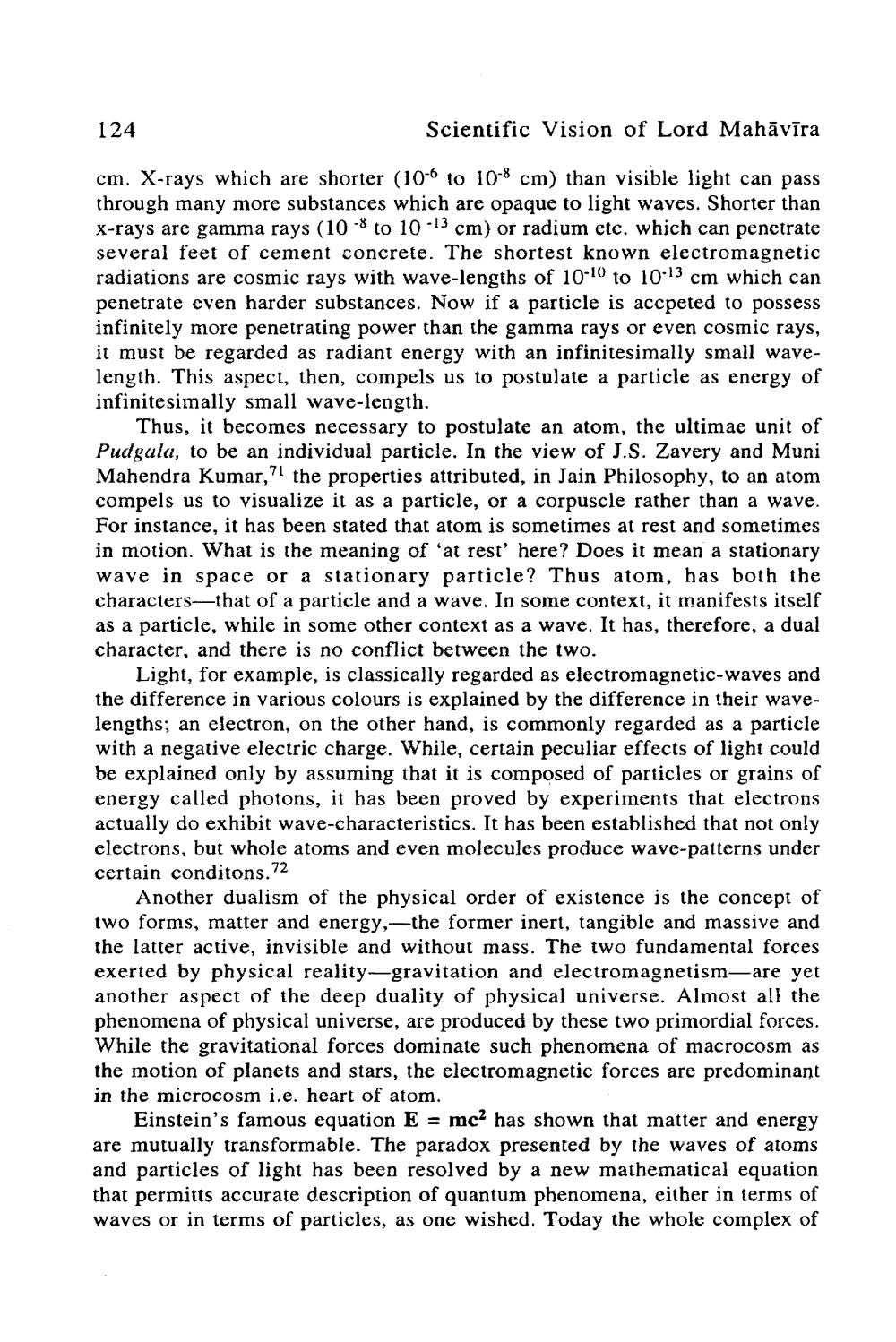________________
124
Scientific Vision of Lord Mahāvīra
cm. X-rays which are shorter (10-6 to 10-8 cm) than visible light can pass through many more substances which are opaque to light waves. Shorter than x-rays are gamma rays (10 8 to 10 -13 cm) or radium etc. which can penetrate several feet of cement concrete. The shortest known electromagnetic radiations are cosmic rays with wave-lengths of 10-10 to 10-13 cm which can penetrate even harder substances. Now if a particle is accpeted to possess infinitely more penetrating power than the gamma rays or even cosmic rays, it must be regarded as radiant energy with an infinitesimally small wavelength. This aspect, then, compels us to postulate a particle as energy of infinitesimally small wave-length.
Thus, it becomes necessary to postulate an atom, the ultimae unit of Pudgala, to be an individual particle. In the view of J.S. Zavery and Muni Mahendra Kumar,71 the properties attributed, in Jain Philosophy, to an atom compels us to visualize it as a particle, or a corpuscle rather than a wave. For instance, it has been stated that atom is sometimes at rest and sometimes in motion. What is the meaning of 'at rest' here? Does it mean a stationary wave in space or a stationary particle? Thus atom, has both the characters that of a particle and a wave. In some context, it manifests itself as a particle, while in some other context as a wave. It has, therefore, a dual character, and there is no conflict between the two.
Light, for example, is classically regarded as electromagnetic-waves and the difference in various colours is explained by the difference in their wavelengths; an electron, on the other hand, is commonly regarded as a particle with a negative electric charge. While, certain peculiar effects of light could be explained only by assuming that it is composed of particles or grains of energy called photons, it has been proved by experiments that electrons actually do exhibit wave-characteristics. It has been established that not only electrons, but whole atoms and even molecules produce wave-patterns under certain conditons.72
Another dualism of the physical order of existence is the concept of two forms, matter and energy, the former inert, tangible and massive and the latter active, invisible and without mass. The two fundamental forces exerted by physical reality-gravitation and electromagnetism—are yet another aspect of the deep duality of physical universe. Almost all the phenomena of physical universe, are produced by these two primordial forces. While the gravitational forces dominate such phenomena of macrocosm as the motion of planets and stars, the electromagnetic forces are predominant in the microcosm i.e. heart of atom.
Einstein's famous equation E = mc2 has shown that matter and energy are mutually transformable. The paradox presented by the waves of atoms and particles of light has been resolved by a new mathematical equation that permitts accurate description of quantum phenomena, either in terms of waves or in terms of particles, as one wished. Today the whole complex of




